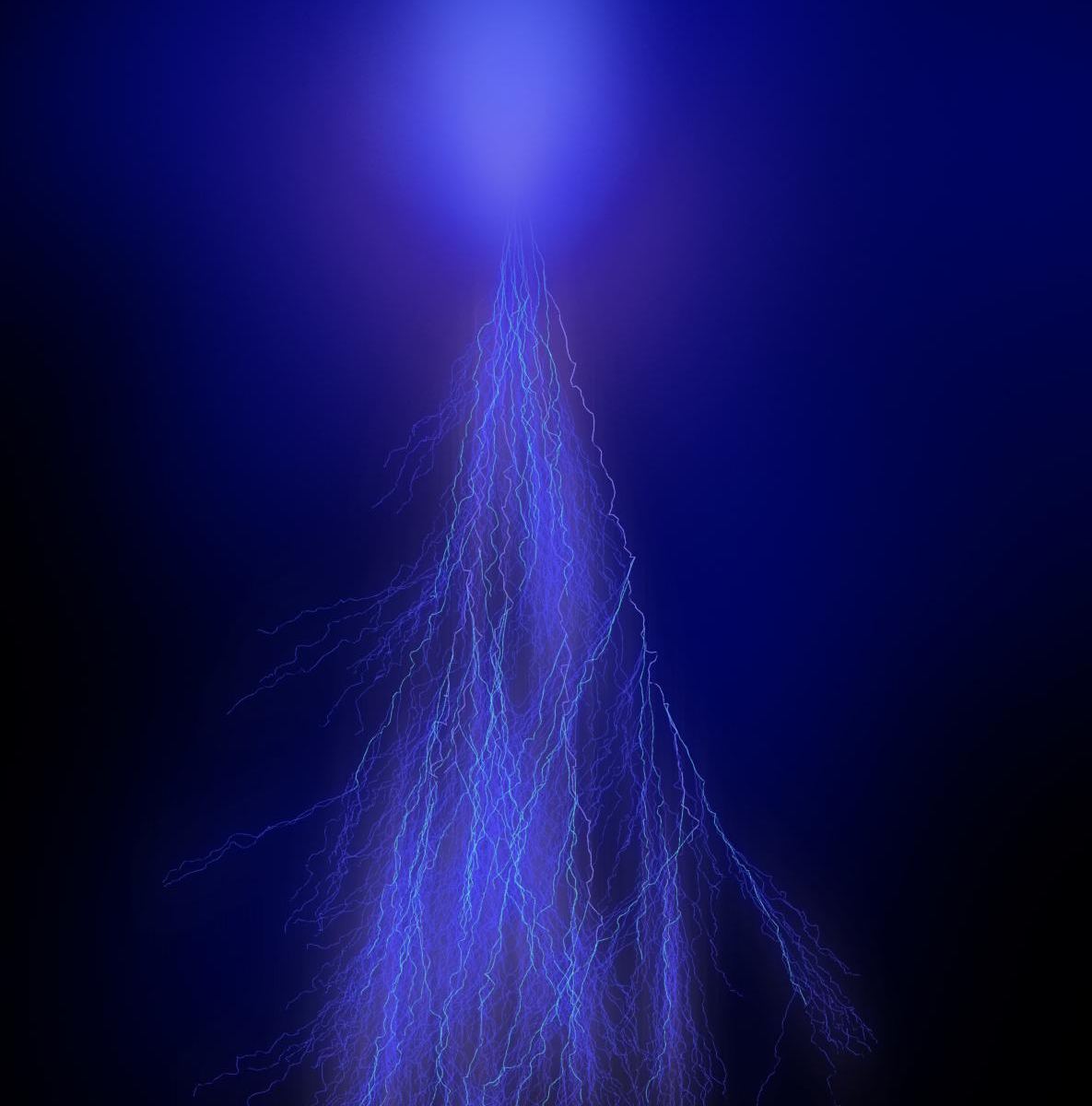Are spirits amongst the clouds of Jupiter? The answer might be yes! A recent publication in the Journal of Geophysical Research: Planets has identified what appear to be “Sprites” in the Jovian Atmosphere.
In European Folklore, ‘Sprites’ (derived from Latin ‘spiritus’ or spirit) were elemental and ethereal beings visiting Earth. The term is fitting for “lightning sprites”, a natural meteorological phenomenon with many eye-witness testimonies but not captured on camera until 1989. Created by lightning discharges in Earth’s atmosphere, sprites are part of larger family of phenomena called TLE’s, or “Transient Luminous Events”, that last for only fractions of a second.
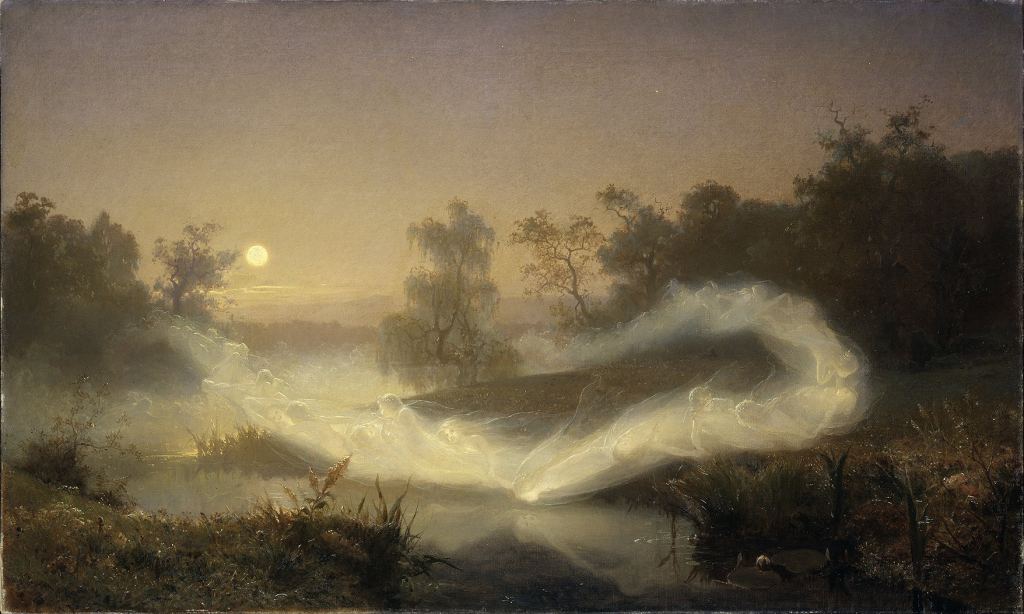
When lighting strikes between clouds, or between clouds and the Earth’s surface, a pulse of electromagnetic and electrostatic energy radiate out into the upper atmosphere. This radiation can excite Nitrogen molecules (N2) in the air creating TLE’s including “Sprites”, “Sprite Halos”, and “Elves.” Sprites, are generated by cloud-to-cloud lightning and appear as luminous tendril-like columns 25-50km wide, reaching 90km high (the Kármán line defining the boundary of the atmosphere and space is at 100), and last for only 5 milliseconds. Sprite halos are diffuse and disk-shaped, 100km in radius, and last for 2-10ms at similar altitudes. Elves are formed by cloud-to-ground strikes creating diffuse rings up to 300km wide that last less than 1ms. Faster than the blink of an eye (100-150ms), TLE’s are difficult to see but some incredible photos have been captured. You can even go sprite chasing!
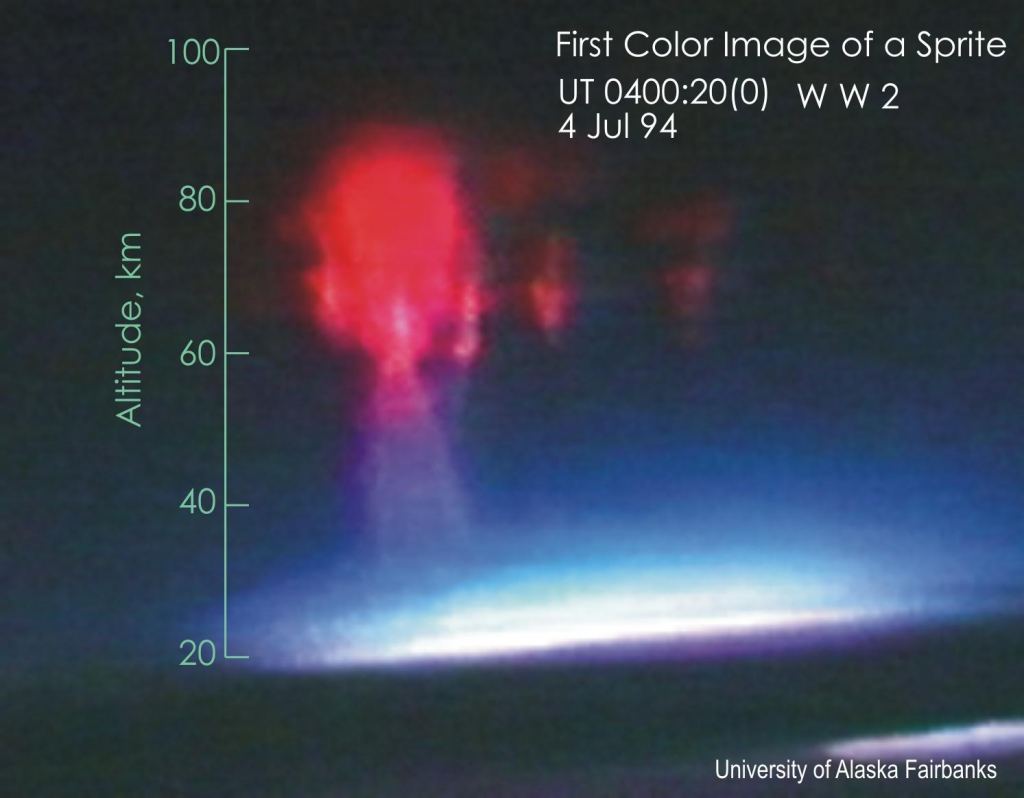
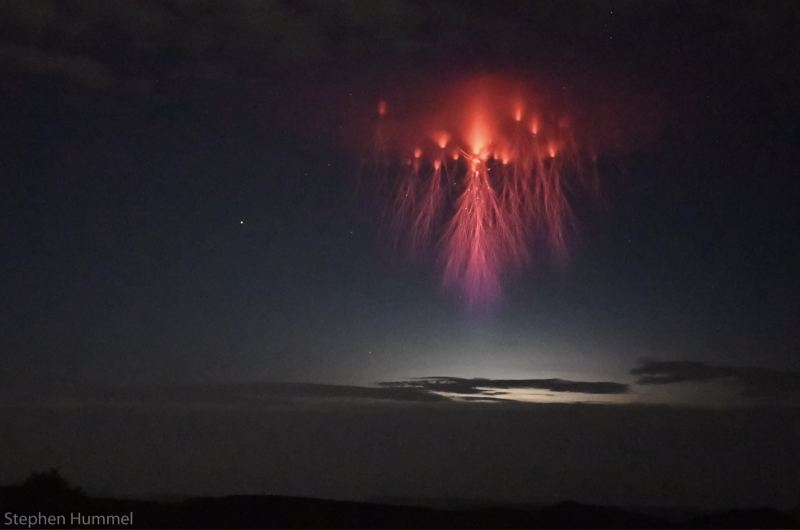
We know that lightning exists on other worlds. Voyager 1 captured images of lightning storms on Jupiter’s night side in 1979. But while there was speculation that lightning storms on other planets could produce similar TLE’s as on Earth, we hadn’t yet observed them. When researchers reviewed Juno data over the last two years, several flashes in both visible and ultraviolet light suggested Juno had observed 11 sprites in Jupiter’s clouds. Differing from Earth, these sprites lasted a mere 1.4ms but were much larger from 500km to 2200km in diameter. They appeared 269km above 1 bar atmospheric pressure (equivalent to Earth’s atmospheric pressure at sea level so like Jupiter’s ‘surface’). The lightning strikes creating these sprites occur between clouds at lower altitudes comprised of both water and ammonia. However, while Earth’s atmosphere creates red sprites from Nitrogen, Jupiter’s sprites appear blue from the excitement of Hydrogen.
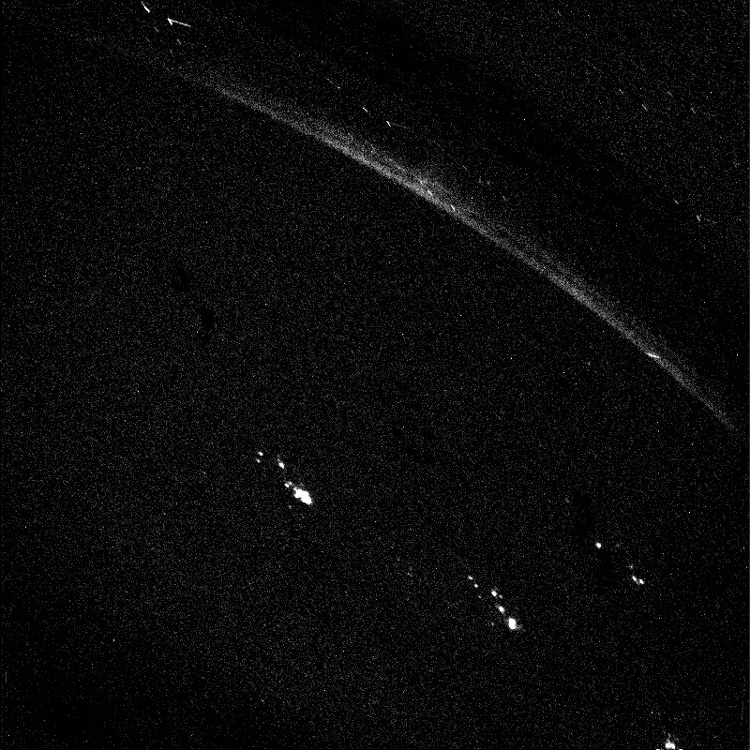
While the Sprites were noted in Juno’s Ultraviolet Spectrograph Instrument, the JunoCam, which sees in visible light, also made note of the brief flashes indicative of sprites.
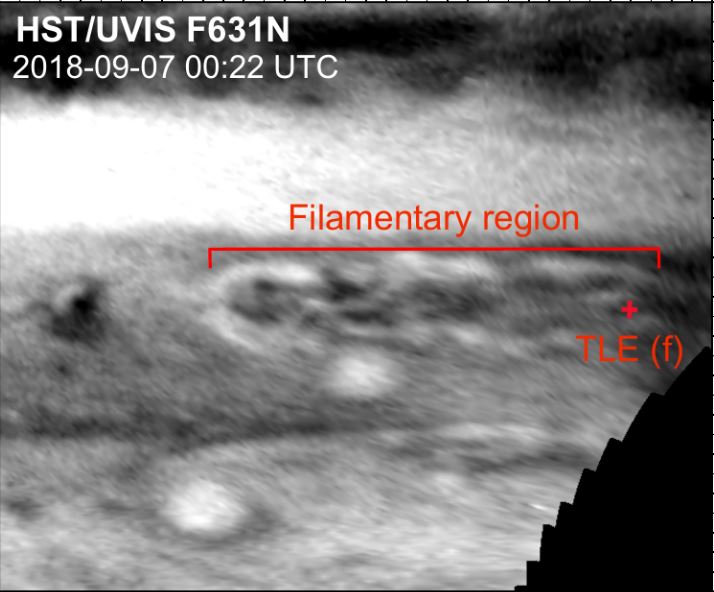
Our world is so different from that of the giantest of gas giants in our solar system. And yet, by studying these other worlds, we find similarities that help us better understand of own. As the researchers note, “Contrasting and comparing TLE observations between Jupiter and Earth will help improve understanding of electrical activity in planetary atmospheres”
Happy Halloween, and watch out for Sprites!
More to Explore:
Juno Data Indicates ‘Sprites’ or ‘Elves’ Frolic in Jupiter’s Atmosphere – NASA
The Dark Skies Initiative – McDonald Observatory
Here’s Jupiter from Juno’s Latest Flyby – Universe Today
See a 360 Degree Juno-Eye View of Jupiter During an Io Eclipse – Universe Today

